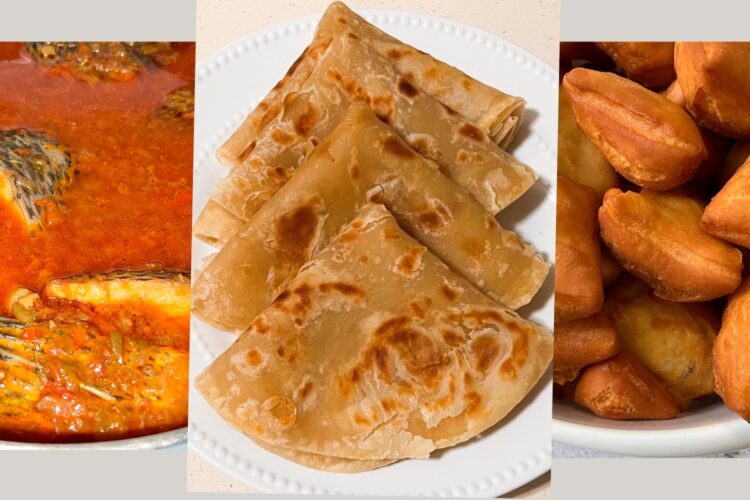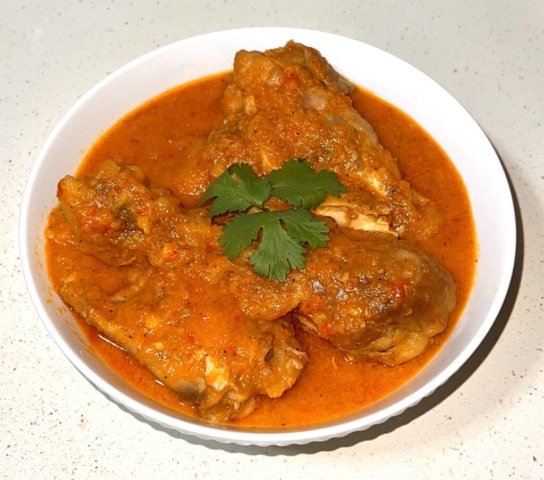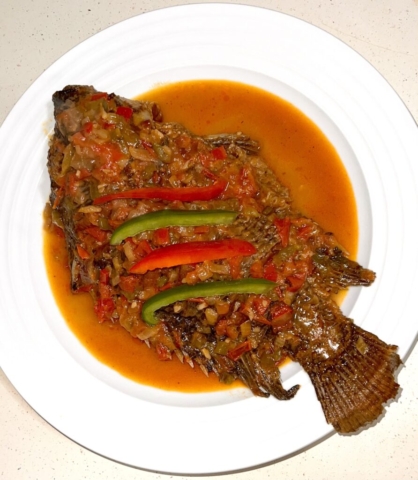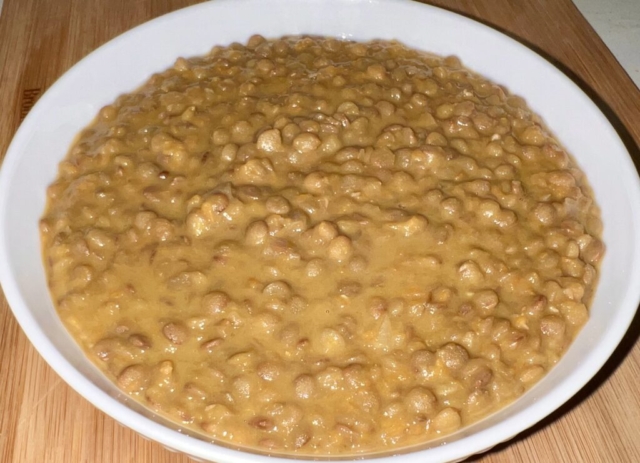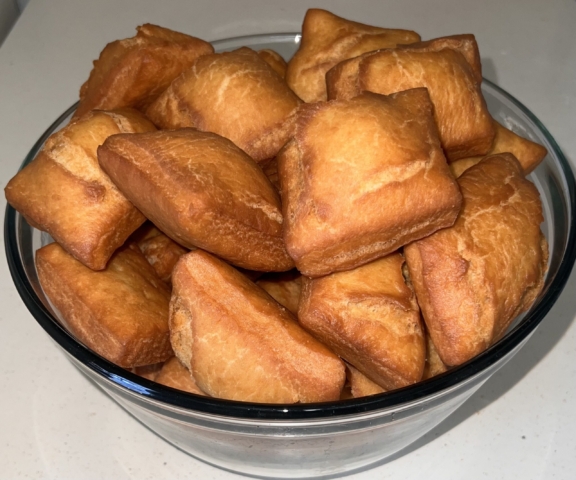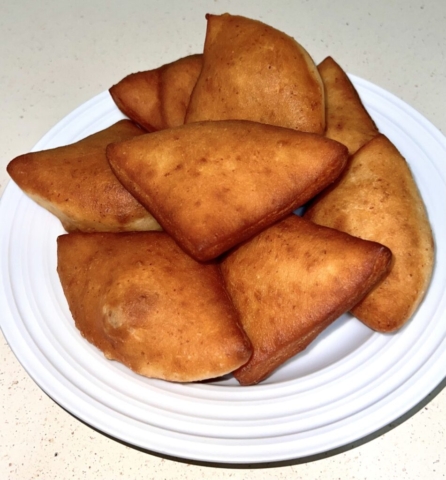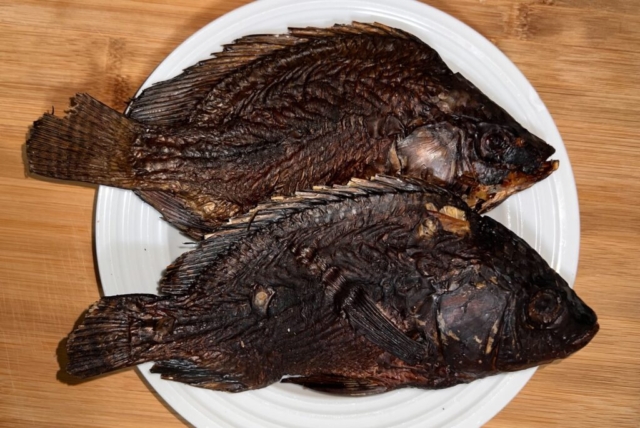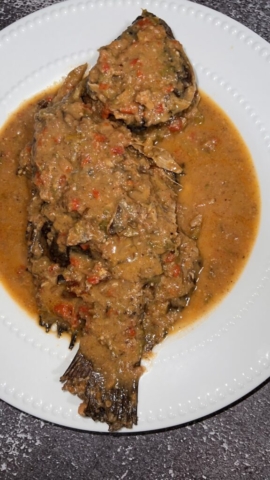This post may contain affiliate links, which means I may receive a commission from purchases made through the links.
As I have lived in two different continents and experienced more of the world’s cultures, I have come to learn that food cultures vary widely in as much as they have some similarities. It seems that each culture has its preferred methods of cooking. I observed, for instance, that the methods of cooking that are commonly used in East Africa where I grew up differ from the methods that are more commonly used in the United States. Also, the preferred cooking methods in each culture seem to be influenced by those people’s eating culture. In this article, I give an overview of the common cooking methods in East Africa (focusing on Kenya, Uganda, and Tanzania), and, where applicable, I draw comparisons with the other cultures I have interacted with.

#1. Stewing
Stewing is one of the common cooking methods in East Africa. Dishes that are commonly stewed include meats, such as beef and chicken, fish, and legumes such as beans, lentils, and green grams. Vegetables like potatoes and peas may also be stewed on their own or added to meat stews.
With this method of cooking, East Africans generally chop their meats into small, mostly bite-size pieces before cooking. Bite-size chunks are preferred because East Africans primarily eat their meals with their hands as opposed to using cutlery as in the Western culture. It is easier, therefore, to pick smaller pieces from a bowl rather than deal with a large chunk of meat. Also, stewing is preferred by many East Africans because stews pair perfectly with the staple sides of the region such as Ugali, Chapati, rice, and potatoes just to mention but a few. Ugali, for instance, is an otherwise bland dish that necessitates a flavorful accompaniment. Stews make a perfect choice for such and they are actually one of the most common ways in which meat is served with ugali as I demonstrate in this video.
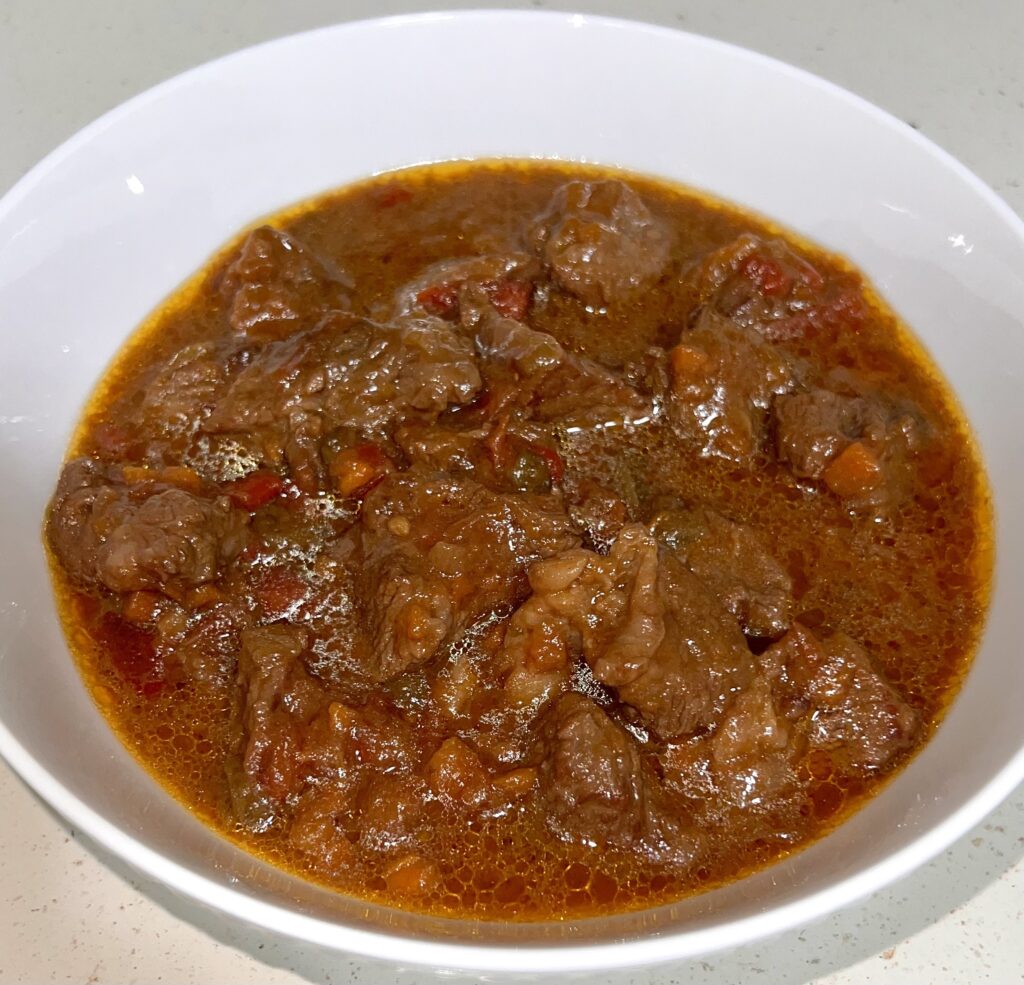
The Uniqueness of East African Stews
Speaking of ugali and accompanying stews, East African meat stews are quite different from those I’ve seen in the United States. A basic Kenyan beef stew, for example, would include just beef, tomatoes, and onions as the ingredients. Those who wish to make it richer would add bell peppers, carrots, and some ground spices. Potatoes and green peas may be added too but mostly if the stew is not being served with ugali (stews to go with rice, chapati, etc.). However, the use of ingredients like celery or wines for flavor addition, or wheat flour to thicken the sauce is uncommon in the region. Also, the proportions of the vegetables to the meat are quite different in the two regions with East Africans preferring to have very minimal amounts of vegetables in the stew so that the meaty taste is prominent. Again, this is especially true for stews that are served with ugali.
Another factor that I believe makes stews popular in East Africa is that stewing allows for more shareability of the dish. A stew comes with a thick sauce to it, which means a small amount of meat could go a long way. Put into perspective, in humble East African households with many mouths to feed, one kilogram (about 2 pounds) of meat could be served to as many as ten people with each getting a few pieces of meat and sauce to go with it.
To see what the delicious East African stews look like, check out my posts for (1) beef stew, (2) fish stew, (3) chicken stew, (4) mung beans stew, (5) lentil stew, and (6) pinto beans stew.
#2. Roasting
Roasting is another of the common cooking methods in East Africa. I mean, who does not love roasted food with its exquisite taste and distinctive texture? East Africans commonly use these two methods of roasting: (1) roasting on charcoal (similar to grilling), and (2) dry roasting (on a pan). Dishes that are roasted on charcoal include meat, mutura, maize, and tubers such as sweet potatoes and cassava among others. Dry roasted dishes, on the other hand, include groundnuts, sesame seeds, soybeans, coffee beans, edible insects such as termites and grasshoppers, etc.
Charcoal Roasting – Common Cooking Methods in East Africa
In Kenya, roasted goat meat is one of the most popular dishes that Kenyans not only love dearly but also recommend to anyone who visits the country. It is referred to as nyama choma in Swahili and is available across the country in restaurants of all calibers. Also, one can find ‘nyama choma joints’ all over the country. Their main business is roasting meat (mainly goat meat, but other meats are also available) and serving it with ugali and cold beverages. So, here I am also recommending Nyama Choma to you if you are not Kenyan. Should you visit Kenya at any one point, make sure to give Nyama Choma a try. I am sure you will love it.
Mutura is another form of roast meat that is a Kenyan creation. Mutura is made of cow intestines stuffed with all sorts of stuff – from organ meats to blood, vegetables, and other seasonings. The intestine, often of considerable length (a few inches to a meter or two) is stuffed while raw, tied on both ends and boiled until everything is well cooked, then it is roasted on charcoal until browned. Mutura is popular street food in Kenya, especially in Nairobi but you can also find it throughout the country. Those who love it say it is addictive and has them running to ‘mutura joints’ every evening after work for a quick bite before heading home. Indeed, mutura sells like hot cake and it is not unusual to find a queue in popular joints.
While on the topic of roasted street food in East Africa, green maize is another delicacy that you will find being roasted on the roadsides throughout Kenya, Uganda, and Tanzania. This is a seasonal delicacy and while in season, everyone goes bananas about it. Roasted maize is also commonly prepared in rural households where many grow maize for subsistence. Roasted maize may be served as an accompaniment for tea for an easy breakfast, or as a snack for any time of day. This picture of Kenya’s Vice President enjoying roast maize went viral, and media houses wrote about it too.
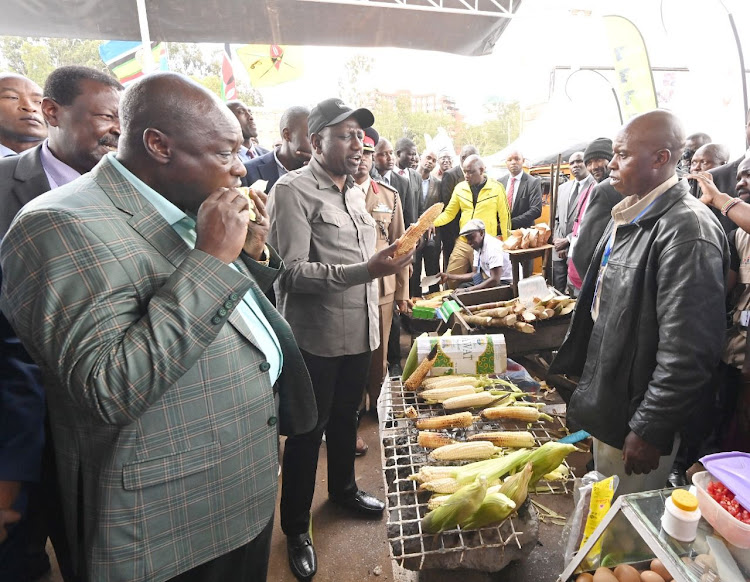
Dry Roasting – Common Cooking Methods in East Africa
Dry roasting also makes the list of common cooking methods in East Africa. In this method of cooking, food is roasted in a pan over low or medium heat. The food is constantly swirled around with a spatula until it is fully cooked. Roasted groundnuts are the most popular food item in this category and may be served for breakfast with tea or as a daytime snack. Roasted groundnuts are also commonly ground to make groundnut butter which is then used as a bread spread or as an ingredient in some traditional East African dishes like I demonstrate in this recipe for dried tilapia in groundnut butter sauce. Sesame seeds are also roasted and used in the same ways as groundnuts while roasted soybeans may be made into a powder that can be used in beverages.
Lastly, on this subtopic of dry-roasted food, have you ever tasted roasted termites or grasshoppers? If not, would you taste them? These seasonal delicacies are so popular in East Africa! They are known for their high protein and fat content, which makes them a great and cheaper source of essential nutrition for many. Roasted grasshoppers, known as nsenene in Luganda, are more popular in Uganda while termites, known as kumbikumbi in Swahili, are popular in all three countries – Kenya, Uganda, and Tanzania.
All in all, roasted food is delicious when made perfectly. This method of cooking requires patience so that one does not rush and burn the food or serve it undercooked on the inside.
#3. Frying
Frying would not be left out in the list of common cooking methods in East Africa. East Africans utilize deep frying, shallow frying, and pan frying for various dishes.
Deep Frying – Common Cooking Methods in East Africa
The deep-fried staples of East Africa include maandazi, mahamri, chicken, fries, samosa, fish, etc. Maandazi and mahamri are doughnut-like breakfast items. Maandazi is usually made with baking powder and dairy milk while mahamri is commonly made with yeast and coconut milk. Both are sweet and absolutely delicious. I have both the maandazi recipe and the mahamri recipe on this site, so please check them out.
As for samosa, East Africans often make the whole package from scratch. That is, the wraps and the fillings. Samosa wraps are made in the same way as chapati, but thinner. The two most common types of samosa fillings are ground beef and green grams. After stuffing and sealing the samosa wraps, the samosas are then deep-fried until well-browned. Samosas are available as street food as well as in restaurants in East Africa.
Shallow Frying
In this method of cooking, food is partially immersed in the cooking oil. Shallow frying is mostly used in the preparation of fish, be it large whole tilapias or smaller fishes like mackerel. Fried fish is popular in Kenya and is very highly consumed daily. Many women are in the business of frying fish and selling it to their customers who, often, are standing there waiting for the fish to be drained off the hot oil. Many Kenyans love to make fish stew from fried fish as it is even tastier and with a better texture.
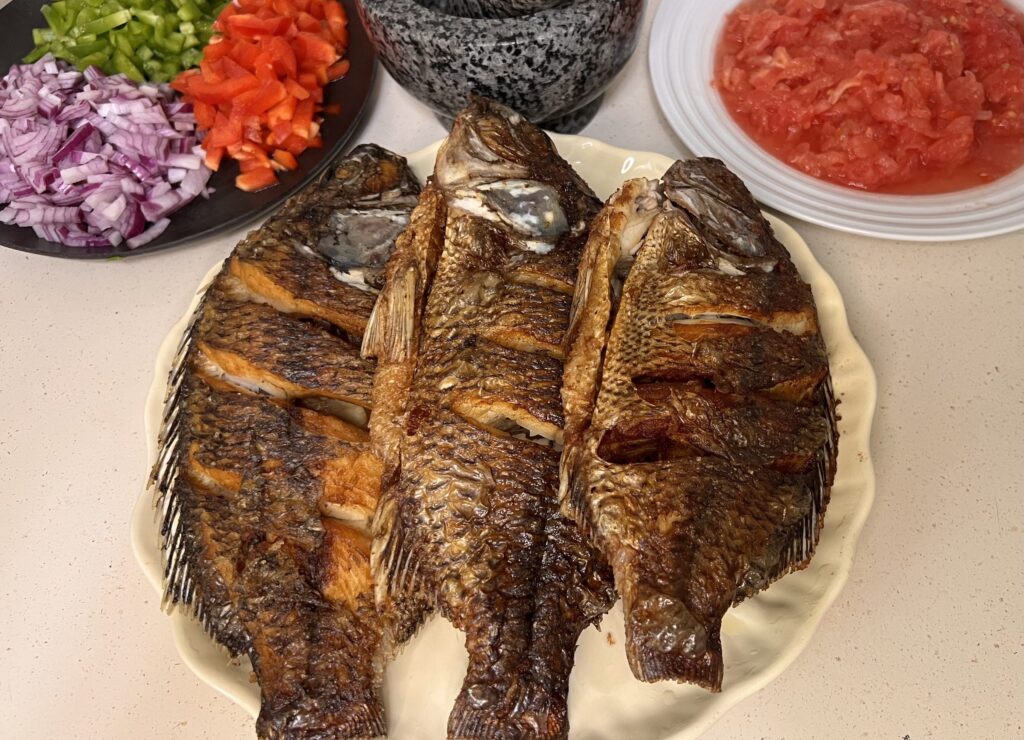
Pan Frying
This cooking method requires just a small amount of oil, mostly a few tablespoons, to cook food on a pan. Some of the notable East African dishes that utilize this method of cooking are Chapati, Chipsi Mayai, and Rolex. The chapati dough is made in the same consistency as bread dough and is then rolled out into small circles and cooked on the pan on medium heat. A tablespoon of oil is spread on each side of the chapati after which it is cooked until it is nicely dotted with brown spots. Please check out my recipe for soft and layered chapati.
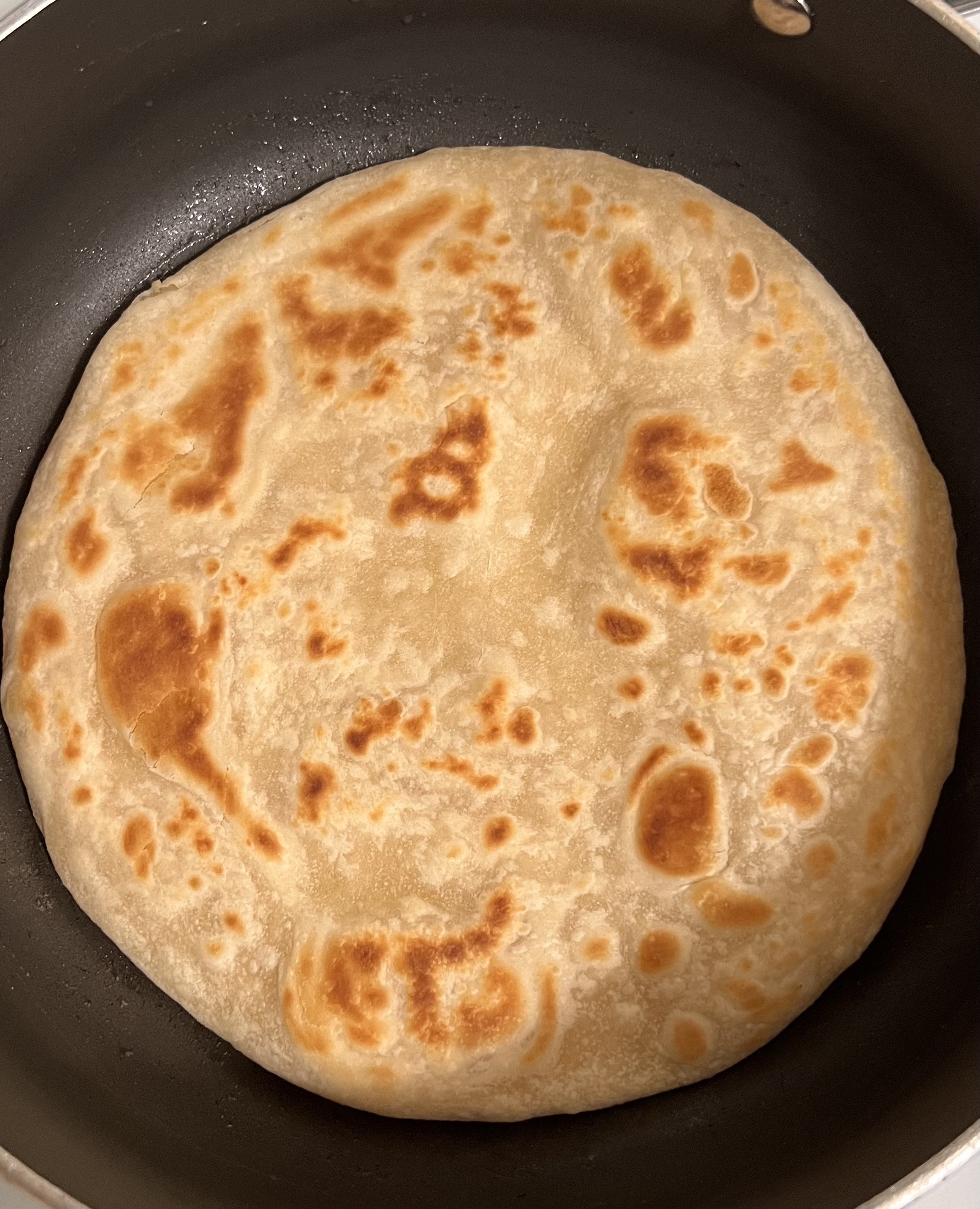
As for Chipsi Mayai (Swahili for fries and eggs), it is a Tanzanian-born dish that has now spread well beyond the borders of the country. To prepare this dish, fries are deep fried normally, then combined with beaten eggs on a wide pan with little oil and cooked until the eggs are well done. The eggs act as the base that holds the fries together besides bringing into the mix their own nutrition and flavor. Chipsi mayai is extremely popular in Tanzania and coastal Kenya. Should you find yourself in those regions, make sure to get a bite.
Rolex, a Ugandan creation, is basically a loaded chapati. The two main ingredients for a Rolex are chapati and eggs. Chapati is first prepared normally, after which an additional layer is created with eggs. The chapati is then made into a roll with the eggs on the inside, which I believe led to this dish being called Rolex. So, there you go with something you must try if you visit Uganda. Rolex never disappoints. It is delicious and with all the nice textures from the chapati and the eggs.
#4. Boiling – Common Cooking Methods in East Africa
Boiling is a universal cooking method, no doubt, but it may vary what dishes are boiled in every culture. It is also part of the list of common cooking methods in East Africa. Commonly boiled foods in East Africa are tubers such as sweet potatoes, cassava, and arrowroots; grains such as maize, beans, and green grams; and some types of meats. Boiling may be the only method of cooking for some of these dishes while for some, another cooking method such as frying or stewing may follow after boiling. For instance, sweet potatoes and arrowroots are often served as is after boiling while cassava mabe deep fried and beans may be stewed. Kenya’s popular githeri, which is a combination of maize and beans, often requires several hours of boiling especially if it is being made from dried grains.
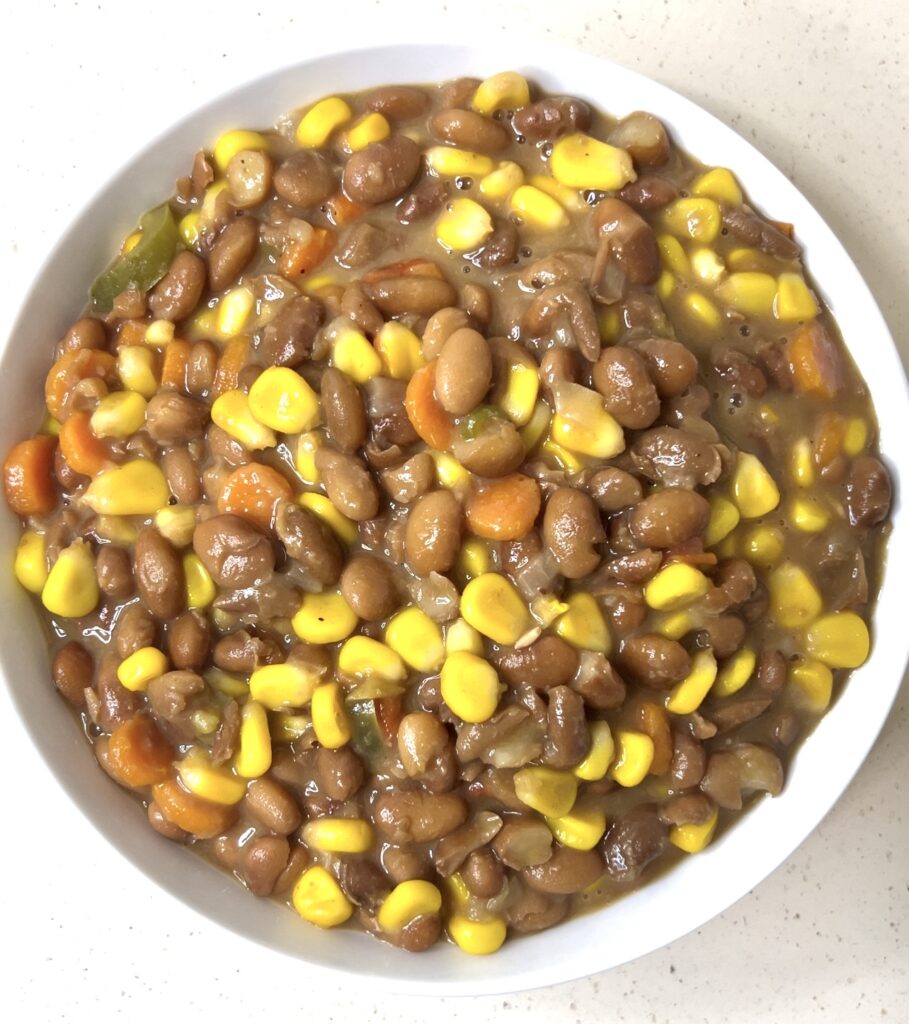
I have also seen meats being boiled and served that way, with salt as the only seasoning. People in East Africa may boil meats for different reasons ranging from health reasons to personal preference or not being able to afford the rest of the ingredients. Growing up, one thing that I found really mesmerizing in my community was the practice of boiling the meat from the head of an animal, say cow or goat. The head would be prepared in a long process that involved roasting and scrapping off the fur and removal of all bones, after which the meat would be boiled, salted, and served. Have you seen anything similar to that in your culture? I would love to hear it!
#5. Steaming – Common Cooking Methods in East Africa
Although it is used on a limited number of dishes, steaming is definitely one of the common cooking methods in East Africa. The one dish that is commonly steamed in the region is matoke, but some people may steam tubers too. Matoke is made from green bananas and often, by specialists who are well experienced in that area. The bananas are peeled and washed, and then they are arranged in a deep cooking pot which is very thickly lined with fresh banana leaves. More banana leaves are used to cover the bananas, thus sandwiching them between two thick layers of those leaves. Water is added to the pot, enough to cook the bananas thoroughly, but not to come in contact with the bananas as they cook. The bananas are cooked in steam until ready. Then, the cook mashes them by pressing gently and repeatedly on the top layer of banana leaves until the dish is compact and smooth. The resulting matoke is then served with a meat stew of groundnut sauce for an extremely delicious and filling meal. Many times, the dish is served on the banana leaves that were used to cook it, adding a form of an aesthetic touch to it all.
Matoke is a staple in Uganda, but other East African countries relish this dish as well.
#6. Slow Cooking
Slow cooking means cooking food on low heat for an extended period. In East Africa, the dishes that I have observed commonly employing this cooking method include dried meats, dried fish, and some native vegetables. In my community and many other surrounding ones in Kenya, meats and fish are dried for preservation. The process of drying meat is similar to roasting or grilling, only it goes on until all moisture is gone and the meat is as hard as stone. As you can imagine, cooking such meat later would require patience and quite a good amount of water. As a kid, I would see my grandmother or my mother soak the meat for a few hours before cooking. Then, it would be simmered for hours in a heavy clay pot until it softened. Dried meat is one of our traditional dishes, so the seasoning added to it would be traditional too. This would be groundnut butter, sesame butter, fresh milk, or sour milk depending on what other traditional seasonings were being used and which paired well with another. I do have a recipe for dried tilapia in groundnut butter sauce which I recommend you check out to get a better picture of this process.
Second in line is native vegetables. Now, I cannot name in English the vegetables I am referring to here, but all I can say is that even though those vegetables could be quickly sautéed and still be edible, I observed my grandmother slow cook them for hours whenever she made the dish. She would literally get started with cooking at 11 am to prepare vegetables that we would have for dinner. Of course, Grandma’s vegetables always turned out much more delicious than the rushed ones we would cook ourselves. I mean, what else would you expect when slow cooking is combined with the experience of an old lady? It was pure gold, I tell you. The dish would be cooked in a clay pot until it became almost mushy, and grandma would then add in fresh milk and cook it a little more (which in her case could be two more hours).
Today, this method of slow cooking is still widely used in many parts of East Africa for both meats and vegetables. Of course, many now lack the patience to cook like my grandma, who would be bothered if she found you cooking on a large flame instead of just embers or a very small flame if any on the stove. In Kenya, slow cooking is more widely practiced in rural areas where one can light wood fire on the hearthstones. Those who live in the cities and crave slow-cooked food try to achieve similar results with charcoal stoves, also known as jiko la makaa/mkaa. I am not sure though if such food from charcoal stoves can be termed slow-cooked as opposed to simply boiled.
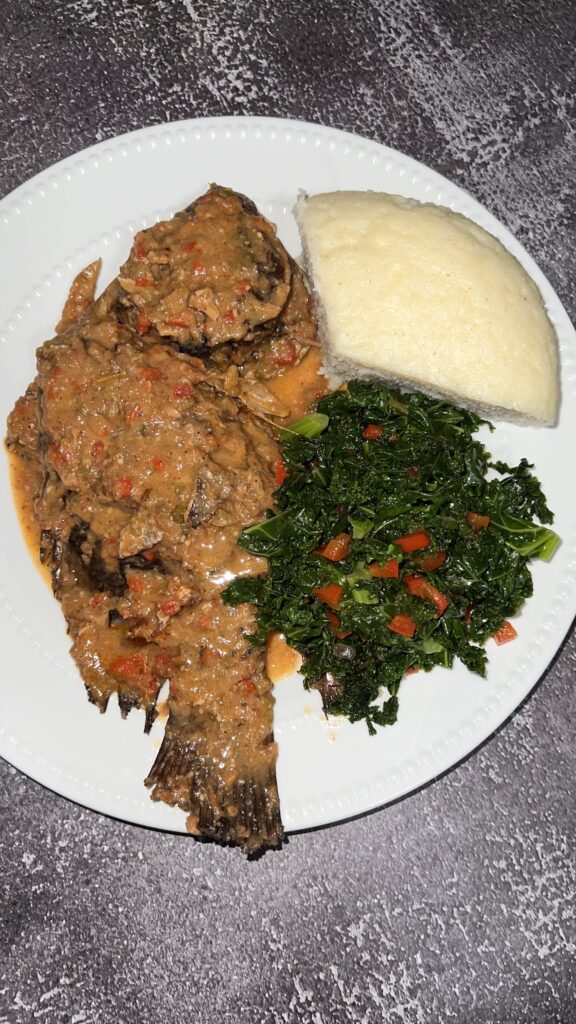
Eating Culture and its Influence on Food Preparation
As I come to the end of this article, I just want to restate my thoughts on how our eating cultures influence how we prepare our foods. The practice of cutting meat into smaller pieces before cooking, for instance, is common in East Africa where people largely use their hands to eat. On the other hand, people in the West like to prepare their steaks uncut because they prefer to use cutlery to eat. Cooking large chunks of meat or a whole bird (as in the case of the Thanksgiving turkey in the United States) is largely absent in daily cooking in average East African households. This practice is reserved for special occasions such as when important guests visit. I talk more about my food culture shock in America in this article. Further, wouldn’t it be complicated trying to use the Asian chopsticks to eat ugali or the loose Basmati rice? I’ve observed that the rice that is eaten with chopsticks is a little on the sticky side, which makes absolute sense, just like the loose types of rice are much more used in cultures that eat either using their hands or cutlery. I stand to be corrected on any of these thoughts.
Conclusion
East Africans utilize a wide variety of cooking methods for their daily meals. Some methods are more commonly used than others, and these are the six most common ones that I observed since childhood. These methods were not only used in my household but also in other parts of Kenya and the other East African countries where I’ve occasionally visited. My list here is not exhaustive. I would love to hear from my readers if there is anything that I missed or any information that you would like to share too.
